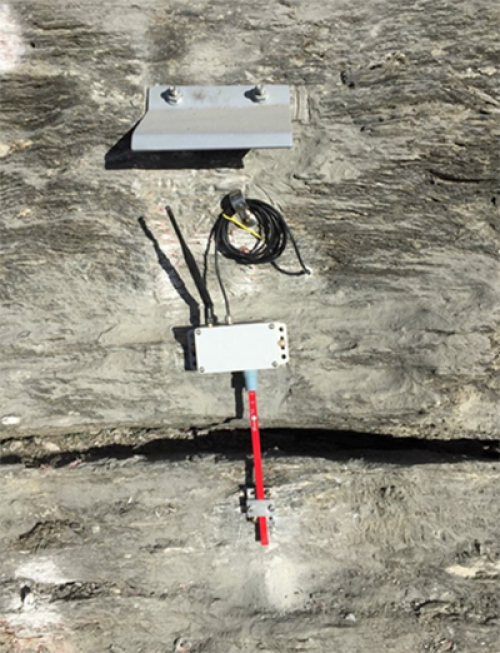The Aspiring Highways team, working for Waka Kotahi NZ Transport Agency, will begin rock stabilisation work on the Nevis Bluff, SH6, next week.
As part of the agency’s ongoing safety and monitoring of the rock face, an increase in movement of one large rock mass, has recently been identified.
Robert Choveaux, Senior Network Manager, Central Otago for Waka Kotahi, says monitoring of the “Yates Feature” was increased late last year and over the festive period.
“Further movement and fresh cracking have now been observed, and we are mobilising our team to intervene to stabilise the rock and try to prevent an uncontrolled collapse.
“Designs have been completed and we are now in a position to begin work. Due to the nature of the plans, which includes building platforms using scaffolding on the rock face, logistics are tricky.”
Work will commence on Tuesday, 25 January. Crews will spend the first two weeks preparing the site before drilling starts.
The Yates Feature has been monitored since 2001 and showed small amounts of movement up until early last year, when it started to increase. The physical properties of the schist rock make it susceptible to ongoing weathering through winter freeze/thaw conditions and drying out due to hot and windy conditions, says Mr Choveaux.
“Rain also reacts with the minerals in the schist, weakening it further. When added with the angle at which the feature sits on the rock face – these all undermine its structural integrity,” Mr Choveaux adds.
“All of these factors contribute to the need for ongoing monitoring of the Nevis Bluff for the safety of road users and the general public.”

Drone survey graphic showing location of Yates Feature 160m above State Highway 6.
“The work will involve stabilising the rock mass with just under 100 rock bolts as the rock mass is quite large and would be significantly disruptive to road users to remove through blasting, using explosives,” says Mr Choveaux.
“The majority of the work can be completed with the road remaining open to two lanes with minimal disruption to road users, but there will need to be closures as abseilers and drilling gear is set up and moved around the rock face.”
The work is expected to take 16 weeks to complete, subject to rock and weather conditions.
Manual monitoring of the Yates Feature by abseilers has been aided by a remote monitoring system. This has been developed in New Zealand by WSP Research for monitoring bridges and has been trialled on the Nevis Bluff for the past two years.
The monitoring system measures small amounts of movement, and temperature, in the rock and sends this information out via the cellular network to geotechnical engineers who assess the data. The system uses a mobile phone battery and provides continuous monitoring data.
“This is the first time this technology has been applied in this way in New Zealand. Having continuous data from the Yates Feature over the Christmas/New Year period provided clarity over the holiday period,” says Mr Choveaux.
“Given the current levels of movement, we are comfortable with the timeframes we have in place to get this safety work started. However, should conditions change we will move immediately and implement closures if needed.”
People who travel between Cromwell and Queenstown, State Highway 6, will need to factor in short delays, up to 10 minutes at a time on weekdays between 8am and 5pm. Waka Kotahi thanks everyone for factoring in additional time on the route and for their patience while this essential safety work is completed.
The Yates Feature is located at the Queenstown end of the Bluff and is approximately 130 – 160m above State Highway 6.
The rock feature is approximately 4,200 cubic metres, weighing more than 12,600 tonnes, 30m high and 20m wide. NB: This figure was updated in March 2022 after drilling into the Feature led to a recalculation of its weight and mass.

Abseilers Wayo Carson and Clinton Beavan installing the remote monitoring system on the Yates Feature in 2019, 160m above State Highway 6.

Remote monitoring system, which is about the same size as a modern mobile phone, in place on the Yates Feature.
Plan ahead for a safe, enjoyable journey. Keep up to date with: